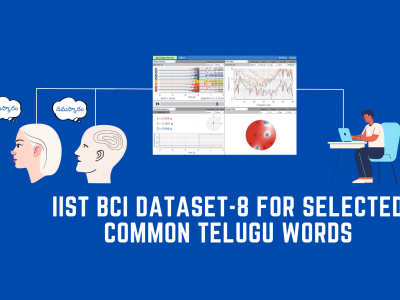Brain Signals
Brain-Computer Interface (BCI) technology facilitates a direct connection between the brain and external devices by interpreting neural signals. It is critical to have datasets that contain patient's native languages while developing BCI-based solutions for neurological disorders. However, present BCI research lacks appropriate language-specific datasets, particularly for languages such as Telugu, which is spoken by more than 90 million people in India.
- Categories:
 451 Views
451 Views
This is a collection of scripts to perform essential preprocessing steps,
doing denoise and feature extraction of EEG (ERP) data using MATLAB and the EEGLAB toolbox.
The scripts are under current development with no guarantee of proper
functioning. The scripts are published in the hopes of helping people with interests in our experiment to reproduce the steps under their environment, and maybe extend to further improvement in the future. Currently, this project works with Muse S band (cortex TP9, TP10, AF7, AF8) device and is implemented with XDF raw Data.
- Categories:
 134 Views
134 ViewsTo address the challenges faced by patients with neurodegenerative disorders, Brain-Computer Interface (BCI) solutions are being developed. However, many current datasets lack inclusion of languages spoken by patients, such as Telugu, which is spoken by over 90 million people in India. To bridge this gap, we have created a dataset comprising Electroencephalograph (EEG) signal samples of commonly used Telugu words. Using the Open-BCI Cyton device, EEG samples were captured from volunteers as they pronounced these words.
- Categories:
 470 Views
470 Views
BS-HMS-Dataset is a dataset of the users' brainwave signals and the corresponding hand movement signals from a large number of volunteer participants. The dataset has two parts; (1) Neurosky based Dataset (collected over several months in 2016 from 32 volunteer participants), and (2) Emotiv based Dataset (collected from 27 volunteer participants over several months in 2019).
- Categories:
 4181 Views
4181 Views
